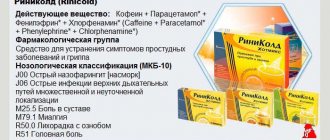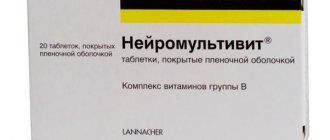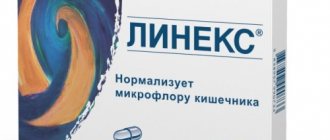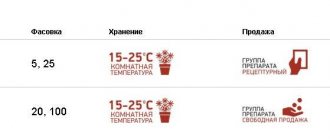Category: Published 05/14/2017 · Comments: · Reading time: 5 min · Views: 4,073
A modern and highly effective drug with pronounced mucolytic and expectorant properties is the drug “Lazolvan”. What does the medicine help with? It has proven itself excellently in the complex treatment of pathologies of the bronchi and pulmonary structures. Syrup, tablets "Lazolvan" instructions for use suggest taking for bronchitis, asthma, pneumonia.
What is the composition and pharmaceutical form
The manufacturer of the pharmacological drug "Lazolvan", which helps children and adults, is presented in several forms:
- syrup for oral administration - in a 100 ml bottle, 1 pc in a package;
- tablets in protective blisters - 10 pcs., 2-3 blisters in a package;
- solution for oral inhalation - in glass bottles, volume 100 ml;
- lozenges of a round shape, with a light brown tint - for children, in a package of 10 pcs.;
- solution for parenteral administration - transparent ampoules of 2 ml, pack of 10 pcs.
The main active ingredient is Ambroxol hydrochloride. It is characterized by pronounced mucolytic and expectorant effects. The main purpose of the auxiliary components is to maintain the healing properties of the main substance.
Other substitute drugs
Is it possible to replace the original remedy with another composition, and if so, for what cough? You can take Lazolvan for wet expectoration and unproductive spasms. In the same cases, other drugs are prescribed that have a stimulating effect on the motor function of the respiratory tract. These medications include the following active ingredients and their trade names:
- acetylcysteine (“ACC”, “Fluimucil”, “Mukobene”);
- bromhexine (“Solvin”, “Bromhexine”, “Flegamine”);
- guaifenesin (Tussin, Coldrex Broncho);
- carbocisteine (Libexin, Fluditec), as well as many others.
All drugs work differently. But the effect of their use is similar. Medicines have a mucus-thinning effect and cause an expectoration reflex. You should not use drug analogues on your own. If for some reason you are forced to stop using Lazolvan, then you need to select a substitute together with your doctor.
Syrup, solution, tablets "Lazolvan": what helps, what are the indications for use
The instructions included with each package of Lazolvan medication indicate that the product can help with the following conditions:
- pathologies of the respiratory structures - both in acute forms and at the time of exacerbation of a chronic disease, in which the release of a viscous secretion is observed;
- COPD;
- bronchitis - both acute and chronic forms;
- asthma, accompanied by difficulty in draining exudate;
- bronchiectasis disorder;
- pneumonia;
- respiratory type of distress syndrome.
Only a specialist should make a decision about the need to include Lazolvan in multicomponent therapy. Self-medication is not acceptable.
By
"Lazolvan" for wet cough
For which cough should I take Lazolvan again? It is acceptable to use the medicine during a wet cough or with the transition from a non-productive spasm to a productive one. This often happens with acute bronchitis. At first, the patient suffers from a debilitating dry cough, but after a few days the sputum begins to thin out. At this point, it is advisable to use an expectorant.
If a patient has pneumonia, then a mucolytic agent is indispensable. For which cough should you take Lazolvan in this case? The medication begins immediately after the diagnosis is confirmed. A person’s cough at this moment can be dry or wet, severe or light. In some cases, there is no spasm at all. But this does not exempt the patient from taking Lazolvan.
Absolute and relative contraindications
Like other medications, the pharmacological drug "Lazolvan" has a number of contraindications:
- first trimester of pregnancy;
- moment of lactation;
- hypersensitivity to the components of the drug "Lazolvan", from which the tablets can cause side effects.
It is recommended that the mucolytic be taken with extreme caution by women over 20-25 weeks of pregnancy, as well as by existing renal or liver failure. Children can take forms of Lazolvan syrup and lozenges from 6 years of age, and tablets from 18-20 years of age.
If a person has an intolerance to the components: fructose, taking the medicine in such forms is not permissible. It is better not to buy tablets for people with lactose deficiency, lactose intolerance, or glucose-galactose malassorption.
Tablets 30 mg
Use in children
According to the instructions, Lazolvan® cough tablets are intended for adults and children over 6 years of age. Such age restrictions are associated with the dosage form and dosage of the active substance, which contains 30 mg in one tablet. Children under 6 years of age need less than 30 mg of the drug at a time, and it is easier for them to drink a solution or syrup than to swallow a tablet. 1 ml of solution contains 7.5 mg of active substance, which is 4 times less than in a tablet. The active ingredient in syrup is 15 mg/5 ml.1
During lactation
Taking Lazolvan® tablets during lactation is contraindicated. Its active ingredient ambroxol hydrochloride can pass into breast milk, the baby will receive a dose of the drug that he does not currently need.1
Use during pregnancy
Lazolvan® tablets are not recommended for use in the first trimester of pregnancy. Ambroxol penetrates the placental barrier, although preclinical studies have not revealed direct or indirect adverse effects on pregnancy; precautions must be taken during this period.1 This is the time when the body of the unborn child is forming and most medications are not recommended for use during this period.3
In the second and third trimester of pregnancy, it is recommended to prescribe Lazolvan® tablets only if treatment of the mother is more important than the potential risks to the fetus.1
For impaired renal function
For kidney diseases and disorders of their function, including failure, Lazolvan® tablets are used only as prescribed by a healthcare professional.
The fact is that any kidney disease, and especially renal failure, significantly changes the processes of renal filtration and distribution of drugs, purification of blood, lymph, and intercellular fluid from them. Kidney disease also affects the binding of drugs to plasma proteins, from where they are distributed to organs. Such changes may require monitoring by a healthcare professional to monitor the body's response, adjusting dosages and/or frequency of dosing.2, 3
For liver dysfunction
Liver diseases and liver failure can affect its important functions: detoxification, cleansing, metabolic.
In case of liver failure, Lazolvan® tablets should be used with caution.1, 3
Active substance
Ambroxol hydrochloride 30 mg is the active ingredient in Lazolvan® tablets. One tablet contains 30 mg of ambroxol.
It is a mucolytic, expectorant, and thins mucus. Increases secretion in the respiratory tract. Increasing mucociliary clearance improves sputum discharge and relieves cough. In patients with COPD, there was a significant reduction in the duration of exacerbations and the number of days of antibiotic therapy.1
The drug "Lazolvan": instructions for use and dosage regimen
The instructions for the pharmacological drug Lazolvan indicate that it must be taken as follows:
- The solution is taken orally. It is permissible to drip into any liquid - tea, water, and juice. No relationship with food intake has been established. Patients over 12 years old: 4 ml three times a day. Children 6 - 12 years old - 2 ml, 2-3 r / s. Children 2-6 years old - 1 ml three times a day. Newborns up to 1 year - 1 ml 2 r/s.
- Solution for subsequent inhalations - used to obtain a fine suspension using devices, for example, nebulizers. Children aged 6 years and older, as well as adult patients, require 1-2 inhalations per day - the volume of the solution is 2-3 ml. However, it is required to combine the product with an isotonic solution of sodium chloride 0.9% in equal volumes. Inhalation of the healing steam resulting from the operation of the apparatus should be shallow so as not to provoke a coughing attack. For people suffering from asthma, it is recommended that the procedures be carried out after taking the main bronchodilators in order to avoid negative irritation of the bronchial structures and their excessive spasm.
- The pharmaceutical product "Lazolvan" in tablets is intended for oral administration. The dose is usually 1 piece. 3 r/s. To enhance the effect in case of severe pathology and excessive viscosity of sputum, a specialist may recommend a different dosage regimen - 2 pcs. 2 r/s. The intake is accompanied by a sufficient volume of fluid; no relationship with food intake has been established.
By
"Lazolvan" for dry cough
For which cough should Lazolvan be taken to alleviate the patient’s condition? The most difficult to tolerate is, as a rule, non-productive bronchospasm. Dry cough often occurs with tracheitis and laryngitis. It is often provoked by throat irritation and diseases such as pharyngitis and tonsillitis. For what cough is Lazolvan prescribed in these cases?
At the appointment, the doctor always listens to the patient’s breathing using a phonendoscope. If whistling or hissing sounds are heard during inhalation and exhalation, this indicates the presence of an inflammatory process and the formation of thick sputum. In this case, the cough does not bring any relief to the person, since the mucus cannot separate from the bronchi and come out. If such a circumstance occurs, then Lazolvan will be an effective treatment.
A dry cough can also be caused by irritation of the larynx. There is no wheezing in the bronchi when listening. In such a situation, the use of Lazolvan can only aggravate the patient’s condition, since the drug will provoke another spasm. A non-productive cough will become even more intrusive and severe.
Reviews
At various forums dedicated to the discussion of drugs that promote the removal of pathological secretions from the area of the pulmonary structures, the majority of reviews about the drug "Lazolvan" are positive. They emphasize that the medication is available in various forms, which makes it easier to administer inside the body, and it is also possible to use it for children under two years of age. Some negative reviews can be explained by non-compliance with the doctor’s recommendations, or violation of the dosage of the medication.
Pharmacological properties of the drug Lazolvan
Ambroxol, the active ingredient in Lazolvan, increases the secretion of the glands of the respiratory tract. Ambroxol enhances the secretion of pulmonary surfactant and stimulates ciliary activity. This leads to improved mucus separation and elimination (mucociliary clearance). Activation of fluid secretion and increased mucociliary clearance facilitate the removal of bronchial secretions and reduce cough. The local anesthetic effect of ambroxol can be explained by its sodium channel blocking properties. In vitro studies have demonstrated that ambroxol reversibly and dose-dependently blocks neuronal sodium channels. These pharmacological properties, leading to a rapid reduction in the severity of pain and pain-related discomfort in the nasal cavity and trachea, are consistent with data from additional observation of symptoms in clinical studies of the effectiveness of ambroxol in the treatment of the upper respiratory tract. In vitro studies have demonstrated that the drug reduces the number of cytokines, as well as the number of tissue-associated mononuclear cells and polymorphonuclear cells. Pharmacokinetics. Absorption of all oral forms of ambroxol is rapid and fairly complete, with a linear dependence in the therapeutic range. The maximum level in blood plasma is reached after 0.5–3 hours. In the therapeutic range, about 90% of the drug binds to blood plasma proteins. When administered orally, the distribution of ambroxol from the blood to the tissues is rapid, with a high concentration of the active substance in the lung tissue. Clinical studies have shown that CYP 3A4 is the dominant isoenzyme that metabolizes ambroxol. Ambroxol is metabolized mainly in the liver by conjugation. The half-life from blood plasma is 10 hours. The total clearance is within 660 ml/min, renal clearance is about 8% of the total clearance. No evidence was found that age and gender affect the pharmacokinetics of ambroxol within clinically significant limits, so there is no need for any dose adjustment.










